Vertigo is a 1958 American film noir psychological thriller film directed and produced by Alfred Hitchcock. The story was based on the 1954 novel D'entre les morts (From Among the Dead) by Boileau-Narcejac. The screenplay was written by Alec Coppel and Samuel A. Taylor.
| Vertigo | |
|---|---|
Theatrical release poster by Saul Bass | |
| Directed by | Alfred Hitchcock |
| Produced by | Alfred Hitchcock |
| Screenplay by |
|
| Based on | D'entre les morts by
|
| Starring |
|
| Music by | Bernard Herrmann |
| Cinematography | Robert Burks |
| Edited by | George Tomasini |
Production company | Alfred J. Hitchcock Productions |
| Distributed by | Paramount Pictures |
Release date |
|
Running time | 128 minutes |
| Country | United States |
| Language | English |
| Budget | $2.5 million |
| Box office | $7.3 million |
The film stars James Stewart as former police detective John "Scottie" Ferguson. Scottie is forced into early retirement because an incident in the line of duty has caused him to develop acrophobia (an extreme fear of heights) and vertigo (a false sense of rotational movement). Scottie is hired by an acquaintance, Gavin Elster, as a private investigator to follow Gavin's wife Madeleine (Kim Novak), who is behaving strangely.
The film was shot on location in San Francisco, California, and at Paramount Studios in Hollywood. It is the first film to use the dolly zoom, an in-camera effect that distorts perspective to create disorientation, to convey Scottie's acrophobia. As a result of its use in this film, the effect is often referred to as "the Vertigo effect".
Vertigo received mixed reviews upon initial release, but is now often cited as a classic Hitchcock film and one of the defining works of his career. Attracting significant scholarly criticism, it replaced Citizen Kane (1941) as the greatest film ever made in the 2012 British Film Institute's Sight & Sound critics' poll. In 1996, the film underwent a major restoration to create a new 70 mm print and DTS soundtrack. It has appeared repeatedly in polls of the best films by the American Film Institute, including a 2007 ranking as the ninth-greatest American movie of all time.
Screenplay
After a rooftop chase, where his fear of heights and vertigo result in the death of a policeman, San Francisco detective John "Scottie" Ferguson retires. Scottie tries to conquer his fear, but his friend and ex-fiancée Midge Wood says that another severe emotional shock may be the only cure.
An acquaintance from college, Gavin Elster, asks Scottie to follow his wife, Madeleine, claiming that she is in some sort of danger. Scottie reluctantly agrees, and follows Madeleine to a florist where she buys a bouquet of flowers, to the Mission San Francisco de Asís and the grave of one Carlotta Valdes (1831–1857), and to the Legion of Honor art museum where she gazes at the Portrait of Carlotta. He watches her enter the McKittrick Hotel, but on investigation she does not seem to be there.
A local historian explains that Carlotta Valdes committed suicide: she had been the mistress of a wealthy married man and bore his child; the otherwise childless man kept the child and cast Carlotta aside. Gavin reveals that Carlotta (who he fears is possessing Madeleine) is Madeleine's great-grandmother, although Madeleine has no knowledge of this, and does not remember the places she has visited. Scottie tails Madeleine to Fort Point and, when she leaps into the bay, he rescues her.
The next day Scottie follows Madeleine; they meet and spend the day together. They travel to Muir Woods and Cypress Point on 17-Mile Drive, where Madeleine runs down towards the ocean. Scottie grabs her and they embrace. Madeleine recounts a nightmare and Scottie identifies its setting as Mission San Juan Bautista, childhood home of Carlotta. He drives her there and they express their love for each other. Madeleine suddenly runs into the church and up the bell tower. Scottie, halted on the steps by his acrophobia, sees Madeleine plunge to her death.
The death is declared a suicide. Gavin does not fault Scottie, but Scottie breaks down, becomes clinically depressed and is in a sanatorium, almost catatonic. After release, Scottie frequents the places that Madeleine visited, often imagining that he sees her. One day, he notices a woman who reminds him of Madeleine, despite her different appearance. Scottie follows her and she identifies herself as Judy Barton, from Salina, Kansas.
A flashback reveals that Judy was the person Scottie knew as "Madeleine Elster"; she was impersonating Gavin's wife as part of a murder plot. Judy drafts a letter to Scottie explaining her involvement: Gavin had deliberately taken advantage of Scottie's acrophobia to substitute his wife's freshly killed body in the apparent "suicide jump". But Judy rips up the letter and continues the charade, because she loves Scottie.
They begin seeing each other, but Scottie remains obsessed with "Madeleine", and asks Judy to change her clothes and hair so that she resembles Madeleine. After Judy complies, hoping that they may finally find happiness together, he notices her wearing the necklace portrayed in the painting of Carlotta, and realizes the truth, and that Judy had been Elster's mistress, before being cast aside just as Carlotta was. Scottie insists on driving Judy to the Mission.
There, he tells her he must re-enact the event that led to his madness, admitting he now understands that "Madeleine" and Judy are the same person. Scottie forces her up the bell tower and makes her admit her deceit. Scottie reaches the top, finally conquering his acrophobia. Judy confesses that Gavin paid her to impersonate a "possessed" Madeleine; Gavin faked the suicide by throwing the body of his wife from the bell tower.
Judy begs Scottie to forgive her, because she loves him. He embraces her, but a shadowed figure rises from the trapdoor of the tower, startling Judy, who steps backward and falls to her death. Scottie, bereaved again, stands on the ledge, while the figure, a nun investigating the noise, rings the mission bell.
- James Stewart as John "Scottie" Ferguson
- Kim Novak as Judy Barton ("Madeleine Elster")
- Barbara Bel Geddes as Marjorie “Midge" Wood
- Tom Helmore as Gavin Elster
- Henry Jones as the coroner
- Raymond Bailey as Scottie's doctor
- Ellen Corby as the manager of the McKittrick Hotel
- Konstantin Shayne as bookstore owner Pop Leibel
- Lee Patrick as the car owner mistaken for Madeleine
Uncredited
- Margaret Brayton as the Ransohoff's saleslady
- Paul Bryar as Capt. Hansen (accompanies Scottie to coroner's inquest)
- Dave McElhatton as the radio announcer (alternative ending)
- Fred Graham as Scottie's police partner (falls from rooftop)
- Nina Shipman as the girl mistaken for Madeleine at the museum
- Sara Taft as nun during closing scene
Alfred Hitchcock makes his customary cameo appearance walking in the street in a gray suit and carrying a trumpet case.
Charles Barr in his monograph dedicated to the study of Vertigo has stated that the central theme of the film is psychological obsession, concentrating in particular on Scottie as obsessed with the women in his life. As Barr states in his book, "This story of a man who develops a romantic obsession with the image of an enigmatic woman has commonly been seen, by his colleagues as well as by critics and biographers, as one that engaged Hitchcock in an especially profound way; and it has exerted a comparable fascination on many of its viewers. After first seeing it as a teenager in 1958, Donald Spoto had gone back for 26 more viewings by the time he wrote The Art of Alfred Hitchcock in 1976. In a 1996 magazine article, Geoffrey O'Brien cites other cases of 'permanent fascination' with Vertigo, and then casually reveals that he himself, starting at age 15, has seen it 'at least thirty times'."
Critics have interpreted Vertigo variously as "a tale of male aggression and visual control; as a map of female Oedipal trajectory; as a deconstruction of the male construction of femininity and of masculinity itself; as a stripping bare of the mechanisms of directorial, Hollywood studio and colonial oppression; and as a place where textual meanings play out in an infinite regress of self-reflexivity." Critic James F. Maxfield has suggested that Vertigo can be interpreted as a variant on the Ambrose Bierce short story "An Occurrence at Owl Creek Bridge" (1890), and that the main narrative of the film is actually imagined by Scottie, whom we see dangling from a building at the end of the opening rooftop chase.
Development
The screenplay of Vertigo is an adaptation of the French novel D'entre les morts (From Among the Dead) by Pierre Boileau and Thomas Narcejac. Hitchcock had attempted to buy the rights to the previous novel by the same authors, Celle qui n'était plus, but he failed, and it was made instead by Henri-Georges Clouzot as Les Diaboliques. Although François Truffaut once suggested that D'entre les morts was specifically written for Hitchcock by Boileau and Narcejac, Narcejac subsequently denied that this was their intention. However, Hitchcock's interest in their work meant that Paramount Pictures commissioned a synopsis of D'entre les morts in 1954, before it had even been translated into English.
In the book, Judy's involvement in Madeleine's death was not revealed until the denouement. At the script stage, Hitchcock suggested revealing the secret two-thirds of the way through the film, so that the audience would understand Judy's mental dilemma. After the first preview, Hitchcock was unsure whether to keep the "letter writing scene" or not. He decided to remove it. Herbert Coleman, Vertigo's associate producer and a frequent collaborator with Hitchcock, felt the removal was a mistake. However, Hitchcock said, "Release it just like that." James Stewart, acting as mediator, said to Coleman, "Herbie, you shouldn't get so upset with Hitch. The picture's not that important." Hitchcock's decision was supported by Joan Harrison, another member of his circle, who felt that the film had been improved. Coleman reluctantly made the necessary edits. When he received news of this, Paramount head Barney Balaban was very vocal about the edits and ordered Hitchcock to "Put the picture back the way it was." As a result, the "letter writing scene" remained in the final film.
Writing
There were 3 screenwriters involved in the writing of Vertigo. Hitchcock originally hired playwright Maxwell Anderson to write a screenplay, but rejected his work, which was titled Darkling, I Listen, a quotation from Keats's Ode to a Nightingale. According to Charles Barr in his monograph dedicated to Vertigo, "Anderson was the oldest (at 68) , the most celebrated for his stage work and the least committed to cinema, though he had a joint script credit for Hitchcock's preceding film The Wrong Man. He worked on adapting the novel during Hitchcock's absence abroad, and submitted a treatment in September 1956."
A second version, written by Alec Coppel, again left the director dissatisfied.
Watch movie Vertigo Film online on Amazon
Watch movie Vertigo Film online
Watch The Movie On PrimeEk Aur Ek Gyarah Full HD Movie Download

Khoya Khoya Chand Full HD Movie Download
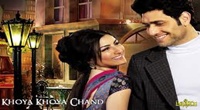
Aaj Aur Kal Full HD Movie Download
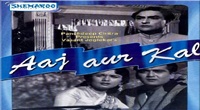
Returns Of Kaartoos Full HD Movie Download
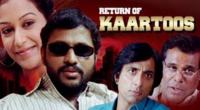
Sampoorna Ramayana Full HD Movie Download
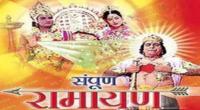
Teen Chor Full HD Movie Download
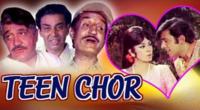
Jeene Ki Arzoo Full HD Movie Download
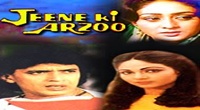
Manzil Full HD Movie Download
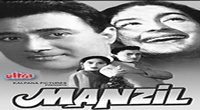
Lal Tuk Tuk Sadhaba Bohu Full HD Movie Download
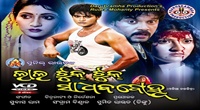
Eraser Full HD Movie Download

Aval Sumangalithan Full HD Movie Download
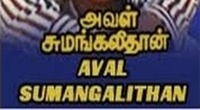
America Abbai Full HD Movie Download
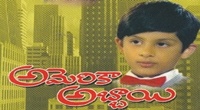
Tantra Mantra Full HD Movie Download
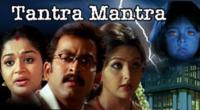
Samadhi Full HD Movie Download

Sundarimare Sookshikkuka Full HD Movie Download
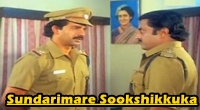
Veta Full HD Movie Download
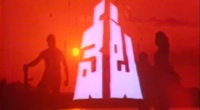
Satyanarayana Swamy Full HD Movie Download
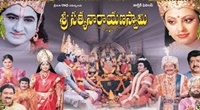
Sanchalanam Full HD Movie Download

Surya Chandra Full HD Movie Download
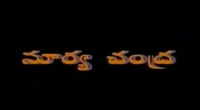
Parmeswari Mahimalu Full HD Movie Download
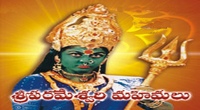
O Manishi Thirigi Choodu Full HD Movie Download
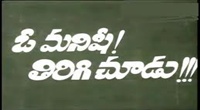
Download latest Movie from bollywood
- 1> baaghi 3
- 2> THE SKY IS PINK MOVIE FULL STORY AND REVIEW
- 3> Luka Chuppi
- 4> TO ALL THE BOYS I’VE LOVED BEFORE
- 5> Kabir Singh
- 6> Street Dancer 3D
- 7> Simmba
- 8> Gone Girl
- 9> The Girl Who Lived
- 10> Ludo
- 11> DILWALE DULHANIA LE JAYENGE
- 12> GUILTY
- 13> The Godfather
- 14> Adventures of Rusty
- 15> Sooryavanshi
- 16> Satyameva Jayate 2
- 17> Thappad
- 18> Bhool Bhulaiyaa 2
- 19> KGFChapter 2
- 20> Mardaani 2
- 21> Pinjar
- 22> Shivaji maharaj
- 23> Ek Villian 2
- 24> Hungama 2
- 25> Divergent
- 26> Mumbai Saga
- 27> The Internship
- 28> HIT (telugu)
- 29> Panga
- 30> The perfect date
- 31> 16 December
- 32> Gopala Gopala (Telugu)
- 33> Brahmastra
- 34> Gangubai Kathiawadi
- 35> Manmadhudu
- 36> Nenu local
- 37> Mahanati
- 38> Shatamanam bavathi
- 39> Lagaan
- 40> After
- 41> MOM
- 42> Shamshera
- 43> Raguvaran BTech
- 44> Khakee
- 45> The villain
- 46> OM
- 47> Mr. perfect
- 48> Bueatifull mind
- 49> Hichki
- 50> Gabbar Singh
- 51> Jogi
- 52> Before Sunrise
- 53> Before Sunset
- 54> Before Midnight
- 55> The Big Bull
- 56> Top Gun: Maverick
- 57> The Purge
- 58> The Sky is Pink
- 59> Laxmmi Bomb
- 60> Sadak 2
- 61> Sufna
- 62> Prithviraj
- 63> PK
- 64> Coolie No 1(2020)
- 65> Black Widow
- 66> Dear Zindagi
- 67> Dil Bechara
- 68> PHIR HERA PHERI
- 69> WAR
- 70> Dostana
- 71> RRR: Roudram Ranam Rudhiram
- 72> Maidan
- 73> Dabbang 3
- 74> Chhalaang
- 75> life as we know it
- 76> SherShaah
- 77> Sandeep Aur Pinky Faraar
- 78> Event Horizon
- 79> 83
- 80> Radhe: Your Most Wanted Bhai
- 81> Gunjan Saxena: The Kargil Girl
- 82> Mr India
- 83> Vivah
- 84> Anokha Bandhan
- 85> Ghost
- 86> Bhoot: Part One - The Haunted Ship
- 87> Haseen Dilruba
- 88> Laal Singh Chaddha
- 89> Qismat
- 90> Rajput
- 91> Drive
- 92> Dil Chahta Hai
- 93> Dil Ki Baazi
- 94> Dil Ka Rishta
- 95> Teesri Manzil
- 96> Dil
- 97> Love Aaj Kal
- 98> Khaali Peeli
- 99> Bunty Aur Babli 2
- 100> Atrangi Re
- 101> Gulabo Sitabo
- 102> Jodi
- 103> Suraj Pe Mangal Bhari
- 104> Deewana
- 105> Attack
- 106> Sardar Udham Singh
- 107> Toofan
- 108> THE LOVEBIRDS
- 109> Jersey
- 110> Ginny Weds Sunny
- 111> Thalaivi
- 112> Shiddat
- 113> Angels vs Zombies
- 114> Koi Mil Gya
- 115> Thank God
- 116> Bhuj: The Pride of India
- 117> Hum Aapke Hain Kaun
- 118> The Platform
- 119> Bird Box
- 120> Roohi Afzana
- 121> Torbaaz
- 122> Nikamma
- 123> World War Z
- 124> Extraction
- 125> Train to Busan
- 126> Life of Pi
- 127> SHAADI MEIN JROOR AANA
- 128> Himmat Aur Mehnat
- 129> To All The Boys: P.S. I Still Love You
- 130> Mimi
- 131> Good Newwz
- 132> Shubh Mangal Zyada Saavdhan
- 133> Raabta
- 134> Harry Potter and the Philosopher's Stone
- 135> Harry Potter and the Chamber of Secrets
- 136> Chhapaak
- 137> War of the Worlds
- 138> Harry Potter and the Prisoner of Azkaban
- 139> Harry Potter and the Goblet of Fire
- 140> MURDER MYSTERY
- 141> Shakuntala Devi
- 142> Bachchan Pandey
- 143> Jayeshbhai Jordar
- 144> Sheer Qorma
- 145> Saina
- 146> 'O' Pushpa I hate tears
- 147> Kedarnath
- 148> MS Dhoni The Untold Story
- 149> Chhichhore
- 150> Badhaai Ho
- 151> Unstoppable
- 152> Oz the Great And Powerful
- 153> The Girl on the Train
- 154> Haathi Mere Saathi 2020
- 155> The Conjuring: The Devil Made Me Do It
- 156> Gandhi Se Pehle Gandhi
- 157> The Song of Scorpions
- 158> Srimanthudu
- 159> Hello Guru Prema Kosame
- 160> Beauty and The Beast
- 161> Black Panther
- 162> Charlie and the Chocolate Factory
- 163> Bole Chudiyan
- 164> Fidaa
- 165> Duvvada Jagannadham
- 166> Bruce Lee: The Fighter
- 167> Hyper
- 168> Yaara
- 169> Red (2020)
- 170> Shivam
- 171> That Is Mahalakshmi
- 172> Nishabdham
- 173> Aashram 2020 web series
- 174> Laxmii
- 175> Mismatched
- 176> STUDENT OF THE YEAR 2
- 177> NAIL POLISH
- 178> Ramprasad Ki Tehrvi
- 179> KAAGAZ
- 180> 12 o Clock
- 181> The Power
- 182> bolo hau
- 183> Tribhanga
- 184> JAMUN
- 185> Madam Chief Minister
- 186> Maasaab
- 187> Aadhaar
- 188> Tanhaji
- 189> Bhaagi 3
- 190> Bhootnath
- 191> MALANG
- 192> Jai Mummy Di
- 193> Haathi Mere Saathi 2021
- 194> Shakeela
- 195> Unpaused
- 196> Annayya
- 197> Vamsoddharakudu
- 198> Mrugaraju
- 199> Narasimha Naidu
- 200> Sankranti
- 201> Manasu Maata Vinadhu
- 202> Anjaane
- 203> Apaharan
- 204> Bachke Rehna Re Baba
- 205> Bewafaa
- 206> Roohi
- 207> Radhe
- 208> Zindagi Khoobsoorat Hai
- 209> Yeh Mohabbat Hai
- 210> Yeh Kya Ho Raha Hai?
- 211> The Tomorrow War
- 212> DehradunDiary
- 213> Meri Shaadi Karaoo
- 214> Matruu Ki Bijlee Ka Mandola
- 215> No One Killed Jesica
- 216> Aag Ka Goola
- 217> Eight Million Dollars
- 218> Three Hundred
- 219> Cats and Dog
- 220> Decoy
- 221> Gold Rush
- 222> You Have Got Mail
- 223> Final Destination three
- 224> Tofan
- 225> Jungle
Request for Download movie Vertigo Film
- Bollywood movies
- Latest Bollywood movies
- Download all bengali movies
- Download all bhojpuri movies
- Download all english movies
- Download all gujarati movies
- Download all hindi movies
- Download all kannada movies
- Download all malayalam movies
- Download all marathi movies
- Download all oriya movies
- Download all punjabi movies
- Download all tamil movies
- Download all telugu movies
- Bollywood action movies
- Bollywood adventure movies
- Bollywood animation movies
- Bollywood classical movies
- Bollywood comedy movies
- Bollywood crime movies
- Bollywood devotional movies
- Bollywood documentary movies
- Bollywood drama movies
- Bollywood family movies
- Bollywood fantasy movies
- Bollywood historical movies
- Bollywood history movies
- Bollywood horror movies
- Bollywood musical movies
- Bollywood mystery movies
- Bollywood mythological movies
- Bollywood patriotic movies
- Bollywood romance movies
- Bollywood romantic movies
- Bollywood sci-fi movies
- Bollywood social movies
- Bollywood spiritual movies
- Bollywood sports movies
- Bollywood suspense movies
- Bollywood thriller movies
- Bollywood war movies
- Hot actress list
- Hot gujarati actress list
- Hot tamil actress list
- Hot bhojpuri actress list
- Hot assam actress list
- Hot bihari actress list
- Hot jammu and kashmir actress list
- Hot gujarati actress list
- Hot haryana actress list
- Hot konkani actress list
- Hot marathi actress list
- Hot odia actress list
- Hot punjabi actress list
- Hot rajasthani actress list
- Hot kannada actress list
- Hot malayalam actress list
- Hot telugu actress list
- Hot tulu actress list
- Hot Actress list from Indian city
- Hot actress list from ahmedabad
- Hot actress list from alappuzha
- Hot actress list from bangalore
- Hot actress list from bangalore
- Hot actress list from bhopal
- Hot actress list from chandigarh
- Hot actress list from chennai
- Hot actress list from guwahati
- Hot actress list from hyderabad, india
- Hot actress list from indore
- Hot actress list from jaipur
- Hot actress list from kannur
- Hot actress list from kochi
- Hot actress list from kolkata
- Hot actress list from kollam
- Hot actress list from kottayam
- Hot actress list from kozhikode
- Hot actress list from lucknow
- Hot actress list from madurai
- Hot actress list from mangalore
- Hot actress list from mumbai
- Hot actress list from mysore
- Hot actress list from new delhi
- Hot actress list from patna
- Hot actress list from pune
- Hot actress list from thiruvananthapuram
- Hot actress list from thrissur
- Hot actress list from tiruchirappalli
- Hot actress list from vijayawada
- Hot actress list from visakhapatnam
- All Bollywood Movies
- Bollywood Celeb
- >Art Director
- >Audiography
- >Background Music
- >Banner
- >Choreographer
- >Cinematographer
- >Costume Designer
- >Dialogue Writer
- >Director
- >Distributor
- >Editor
- >Executive Producer
- >Hair Stylist
- >Lyricist
- >Music Director
- >Photographer
- >Playback Singers
- >Presenter
- >Producer
- >Production Company
- >Production Designer
- >Screenplay
- >Singer
- >Sound
- >Actor
- >Story Writer
- >Studio
- >Video Director
- >Miscellaneous
- >Publicity (pro)
- >Web Creator
- >Production Labs
- >Publicity Design
- >Publicity Stills
- >Writer
- >Miscellaneous Artists
- >Visual Effects
- >Reporter
- >Music Company
- >Shooting Studios
- >Picturised On
- >Line Producer
- >Co Producer
- >Asst Director
- >Casting Director
- >Cinematography
- >Choreography
- >Dialouge
- >Editing
- >Lyrics
- >Music
- >Story
- >Playback Singer Female
- >Playback Singer Male
- >Actor In A Comic Role (male/female)
- >Child Artiste
- >Ensemble Cast
- >Actor Popular Choice (male)
- >Actor Popular Choice (female)
- >Sa Re Ga Ma Pa Song Of The Year
- >Actor In Supporting Role
- >Actress In Supporting Role
- >Actor In Leading Role
- >Art Direction
- >Actress In Leading Role
- >Sound Recording
- >Costume Design
- >Special Effects
- >Action
- >Actor In A Negative Role
- >Lifetime Achievement Award
- >Cinematic Exellence (director)
- >Cinematic Exellence (male)
- >Cinematic Exellence (female)
- >International Male Icon
- >International Female Icon
- >Actor In A Supporting Role (male)
- >Actor In A Supporting Role (female)
- >Actor In A Comic Role
- >Playback Singer (male)
- >Playback Singer (female)
- >Most Promising Debut (female)
- >Most Promising Debut (male)
- >Most Promising Director
- >Sound Design
- >Lifetime Jodi
- >Marketed Film
- >Jury Award For Best Actor
- >Jury Award For Best Actress
- >Jury Award For Best Film
- >Jury Award For Best Director
- >Playback Singer(male)
- >Lifetime Acheivement Award (male)
- >Excellence Award
- >Jodi Award
- >Performer Of The Year
- >Presented By
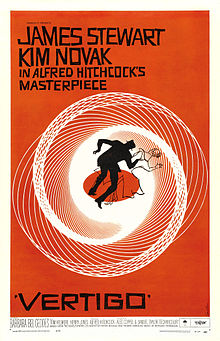 Story of movie Vertigo Film :
Story of movie Vertigo Film : 